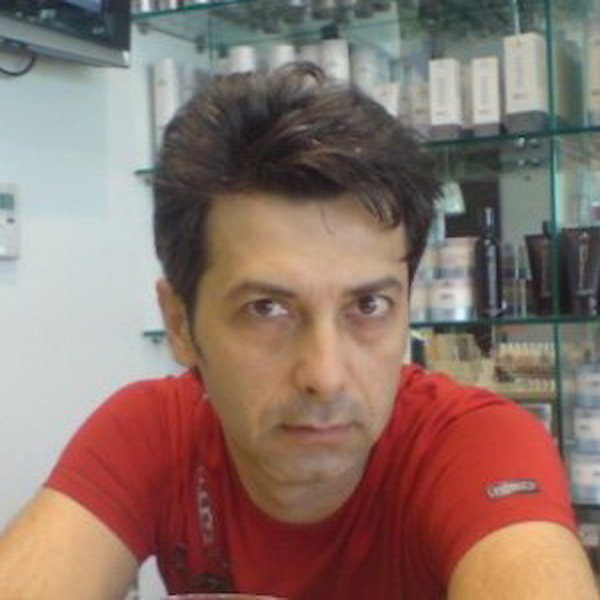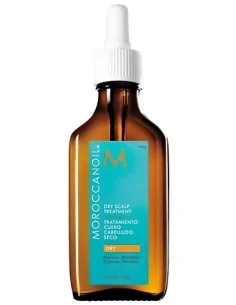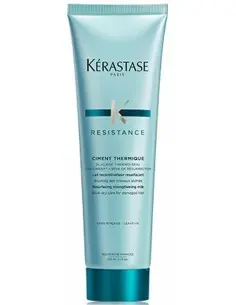- HairMaker.Gr
- Hair
- 1 likes
- 2479 views
- 0 comments
- repair damaged hair, treat, fix

8 Ways to Treat and Fix Your Damaged Hair
Damaged hair is not just an aesthetic problem – it's a sign that your hair needs care, rejuvenation, and proper treatment. Daily use of heat tools, chemical dyes, frequent washing, and harmful environmental factors can destroy the hair's structure, making it dry, brittle, and lifeless.
Fortunately, even the most damaged hair can be regenerated, as long as you follow the right care practices and use the right products.
1. Intensive Hydration with Hair Masks
Use a hair mask rich in keratin, proteins, and moisturizing ingredients. Masks should remain on for at least 15 minutes to penetrate the hair shaft.
2. Sulfate-Free Shampoo
Avoid shampoos with SLS. Opt for shampoos for damaged hair with natural extracts.
3. Use of Botanical Oils
Oils like argan and coconut protect and nourish the hair. Apply a few drops to damp hair or before shampooing.
4. Regular Trims
Remove split ends every 6–8 weeks to prevent hair breakage.
5. Nutrition and Vitamins
Consume foods rich in biotin, zinc, and omega-3s. You can supplement your diet with hair supplements.
6. Heat Protection
Limit the use of heating tools. When necessary, always apply a heat protectant product.
7. Keratin Treatments
Keratin helps to rebuild the hair structure. It is recommended to use products with keratin 1–2 times a week.
8. Myths & Truths
We often believe that split ends can be healed – in reality, only scissors can remove them. Choose the right care products and avoid myths that do more harm than good.
Comments from Customers Who Trusted Our Advice
✔️ Maria P. – Athens
"After dyeing and daily straightening, my hair had turned to straw. I applied the advice from the article and saw a difference within 2 weeks!"
✔️ Stelios M. – Thessaloniki
"I now use coconut oil and SLS-free shampoo. My hair has much less frizz and a more natural shine."
✔️ Eleni G. – Heraklion, Crete
"I did the mask you recommended. I didn't think it would work, but my hair is softer than ever!"
Damaged hair is not just an aesthetic problem – it's a sign that your hair needs care, rejuvenation, and proper treatment. Daily use of heat tools, chemical dyes, frequent washing, and harmful environmental factors can destroy the hair's structure, making it dry, brittle, and lifeless.
Fortunately, even the most damaged hair can be regenerated, as long as you follow the right practices.
Our hair is daily exposed to a multitude of factors that can lead to damage. The use of heat, chemical dyes, intense styling, as well as external conditions like pollution and solar radiation contribute to hair damage. If you have noticed that your hair is dry, brittle, losing its elasticity and shine, then it is likely damaged and needs immediate care.
The good news is that with proper care, targeted products, and consistency, even the most damaged hair can return to a healthy state. In this article, we will analyze 8 effective ways to strengthen the hair, restore its moisture, and rebuild its natural strength and shine.
From proper nutrition and avoiding heat stress to choosing suitable shampoos and treatments, you will find all the steps you need to help your hair be "reborn." If you are ready to invest a little time in their care, the results will not be long in coming!
Let's start, then, with the first way to care for and restore hair:
✅. Intensive Hydration with Hair Masks
Proper hydration is the alpha and omega for rejuvenating your hair. Hair masks with ingredients like keratin, argan oil, wheat protein, or shea butter can penetrate deep into the hair shaft and strengthen it from the inside out. Use a quality mask at least once a week, leaving it on for 10–20 minutes for maximum effect. If your hair is extremely dry or has been dyed, do not hesitate to repeat the process twice a week.
Hair masks are special for conditioning. They contain high concentrations of restorative and moisturizing ingredients, such as vitamins, oils, and naturally derived elements that act directly on damaged hair. They are also thicker, so when you apply them to wet hair, they stay in place. This gives them time to penetrate deeper into the hair's surface and fill the gaps that develop on the surface of damaged hair. The masks continue to work even after you rinse them out.
Find a hair mask that is suitable for your hair type - for example for colored hair. Use the hair treatment mask twice a week or more. And don't rush - the longer you leave it on, the more effective it will be.
✅ Choosing a Suitable Sulfate-Free Shampoo
Choose a shampoo that is specifically designed for damaged hair. Washing with a shampoo containing naturally derived ingredients will help restore your damaged hair.
Excessive washing can strip the scalp and hair of its natural oils, leading to dryness and breakage. Try to wash your hair at most 2-3 times a week and use dry shampoo if needed in between. When you wash, use lukewarm, not hot, water and always finish with a conditioner or mask.
Many commercial shampoos contain harsh sulfates that strip the hair of its natural oils. This results in dryness, scalp irritation, and damage to sensitive hair. Choose a shampoo without SLS and parabens, preferably with natural moisturizing and softening ingredients like aloe, coconut oil, or oats. If you have colored hair, make sure your shampoo is color-safe.
✅ Apply Leave-Ins
Leave-ins are like bodyguards for your hair. They serve and protect because you don't rinse them out. Like most hair products, leave-ins vary depending on your hair type.
A leave-in for color-treated hair with vibrant colors, for example, will offer UV protection to prevent color fading. One suitable for frizzy, unruly hair will add hydration and make your hair softer and more manageable. For optimal results, apply to damp, not wet, hair and comb through with a wide-tooth comb for even distribution.
✅ Using Oils for Nourishment and Reconstruction
Botanical oils are among your most powerful allies in the fight against damage. Olive oil, coconut oil, argan oil, and jojoba oil have excellent nourishing properties and help restore the hair's elasticity and smooth texture. You can use them either as a pre-shampoo treatment or as a leave-in, in a small amount, for protection and shine.
✅ Regular Trims to Avoid Split Ends
Although it may sound counterintuitive, regular trimming is essential for the health of your hair. Damaged ends, if not removed, continue to move up and "eat away" at the length of the hair. Trim the ends every 6–8 weeks to refresh the hair's shape and prevent further damage.
✅ Nutrition and Supplements for Strong Hair
Healthy hair starts from within. A balanced diet rich in vitamins A, C, D, E, zinc, iron, and omega-3 fatty acids is essential for hair growth and strengthening. Supplements with biotin or collagen can also help restore hair density and texture, especially during times of stress or after illness.
✅ Sleeping on Silk Pillowcases & Night Protection
Another simple but effective tip is to use a silk or satin pillowcase. Traditional cotton pillowcases cause friction and damage to the hair during sleep. Silk helps to retain moisture and reduces breakage and frizz. If you have long or curly hair, you can also gently tie it in a loose braid or use a silk nightcap.
Caring for damaged hair is not an overnight affair. It requires consistency, right choices, and quality products. With a little patience and dedication, your hair can regain the health, strength, and shine it deserves.
✅ Be Careful with Dyeing
Whether you make big changes or not, frequent home dyeing can have negative effects. Chemical dyes can strip the hair of its natural moisture, creating brittle hair.
Experts recommend choosing a color that is close to your natural color. Colors that are very different from your natural shade are difficult to maintain and need to be refreshed more often.
Less frequent hair dyeing can help reduce damage. If possible, wait 6 to 8 weeks for a touch-up.
To make this more feasible:
• Wash your hair less often.
• Use only shampoos formulated for colored hair.
• Rinse shampoo and conditioner with cool water. Hot water can cause the hair cuticle to open, allowing the dye to wash out.
• Go to a professional. A professional hairdresser knows how to use the right products to minimize damage.
Handle wet hair with care
Each hair strand is more vulnerable when wet. And the chance of damage increases especially if your wet hair is curly or fragile. So extra care is needed. Never try to just pull a brush through your wet hair.
Most professionals recommend using a wide-tooth detangling comb. When you get out of the shower, gently pat your hair dry with a towel, or even better, with a microfiber cloth or simply a soft t-shirt. This way you avoid the friction that can damage delicate hair.
Lower the temperature on styling tools
No woman can give up her hair styling tools that transform unruly and disobedient hair into shiny curls, for example, or give her the perfect straightening. But with all that heat, of course, comes damage—dryness and brittleness.
Daily straightening, blow-drying, and curling irons cause serious damage. High heat destroys the outer layer of the hair (cuticle) and leads to split ends and breakage. When it is necessary to use heat, be sure to first apply a heat protectant spray. Ideally, try to let your hair air dry as often as possible.
According to professionals, one of the biggest mistakes women make is setting the temperature too high when styling their hair. You should set the temperature to a medium level unless you have extremely thick and coarse hair. Also, always use a thermal protection product to protect your hair from heat damage. Of course, skip heat styling altogether when possible.
Trim split ends
Split ends will lead to hair breakage from the bottom up, resulting in a dull, broken, and frizzy appearance.
To prevent split ends in the first place, keep your hair healthy and strong with strengthening shampoos, conditioners, and leave-ins. To keep split ends under control, visit your hairdresser for frequent trims, without this meaning you will lose length.
In addition to treatments that help restore hair, it is equally important to avoid certain habits that worsen the damage. Avoid tight hairstyles that pull the hair, daily styling with high heat, and chemical processes (such as bleaching or excessive dyeing). Do not brush your hair while it is wet and vulnerable, especially if you have not used a conditioner or leave-in product.
Natural Reconstruction Recipes at Home
If you want to follow a natural approach, there are simple DIY recipes you can apply with ingredients you already have. A mixture of coconut oil, honey, and egg can deeply nourish the hair and moisturize it. Apply the mixture to clean, slightly damp hair, cover with a cap, and leave it on for 30 minutes before rinsing. This treatment can be repeated weekly.
Keratin Products – Are They Right for You?
Keratin is the main protein of hair, and when it is weakened, the hair loses its cohesion. Many modern care products contain keratin in liquid form that "fills" the cracks in the hair and smoothes it. If your hair is damaged due to heat or chemicals, using shampoos, conditioners, or masks with keratin can make a difference. But be careful: do not overdo it with their use, as excessive protein can make the hair stiff.
The Beauty Salon is an Ally – Not a Solution
Although professional treatments at the salon, such as hair botox or professional keratin, can offer spectacular results, they do not replace a consistent home routine. Success lies in daily care and prevention. Use the salon as a reinforcing addition and not as an emergency solution when the hair is already significantly damaged.
Frequency is Key
Whatever strategy you choose — natural, professional, or store-bought products — consistency is what will bring results. No mask or treatment can completely transform the condition of the hair in a single application. It takes 3-4 weeks of continuous care to see a visible improvement, and at least 2-3 months for damaged hair to fully recover.
Treating damaged hair is a journey – not an instant solution. With the right steps, suitable products, and healthy habits, your hair can be revitalized and regain volume, shine, and elasticity. Try the 8 ways above, adapt them to your needs, and give your hair the care it truly deserves ❤️
Comparison of Treatments for Damaged Hair
| Treatment | Suitable for | Main Benefits | Frequency |
|---|---|---|---|
| Intensive Hydrating Mask | Dry or damaged hair | Restores moisture, reduces frizz | 1–2 times a week |
| Argan / Coconut Oil | Dull, brittle hair | Protection & nourishment, enhances shine | 2–3 times a week |
| Keratin Treatment | Weak or colored hair | Smoothes the hair, reduces breakage | Once a week or in cycles |
Myths and Truths about Hair Care
- Myth: If you cut your hair often, it grows faster.
Truth: Cutting does not affect the growth rate, but it keeps the ends healthy. - Myth: Natural products are always better.
Truth: Although many natural ingredients help, effectiveness is judged by their combination and the quality of the formula. - Myth: Cold water "closes" the hair cuticles.
Truth: Although there is no scientific proof, a lukewarm rinse is always better than hot.
✂️ Mini Guide to Choosing Reconstruction Products
✔️ For intense dryness: Look for masks with shea butter and panthenol.
✔️ For split ends: Leave-in serum with keratin and silicone for immediate protection.
✔️ For colored hair: Sulfate-free shampoo + strengthening conditioner with vitamin E.
✔️ For natural strengthening: Coconut oil before shampooing and argan after styling.
Don't forget: every hair type is different. What works for someone else may not be ideal for you. Pay attention to the needs of your own hair and care for it with love and patience.
Frequently Asked Questions (FAQs)
Looking for the best products for damaged hair?
See All Hair Reconstruction Products
Want only the good news? So do we.
- ✅ We don't spam (we don't have time for that either).
- ✅ You choose the categories that interest you — so you only get what you want.
- ✅ And of course… you get a 10% discount on your first order.
All gain. No fluff.
Subscribe NowRelated Articles

Giannis – HairMania Greece Owner & Founder of HairMaker.Gr
Professional hairstylist with 25 years of experience in men’s & women’s grooming. Owner of HairMania Greece and founder of HairMaker.Gr.
My team and I at HairMaker.Gr create articles based on real product tests, customer experiences, and the professional knowledge we gain daily in the salon.
If you have questions or need personalized grooming advice, email us at info@hairmaker.gr and we’ll be happy to assist you personally!
Learn more about us on the HairMaker.Gr About page
Follow us:
@hairmakergr | @hairmaniagr
Reviewed and fact-checked by Giannis – Professional hairstylist with over 25 years of experience















Comments (0)